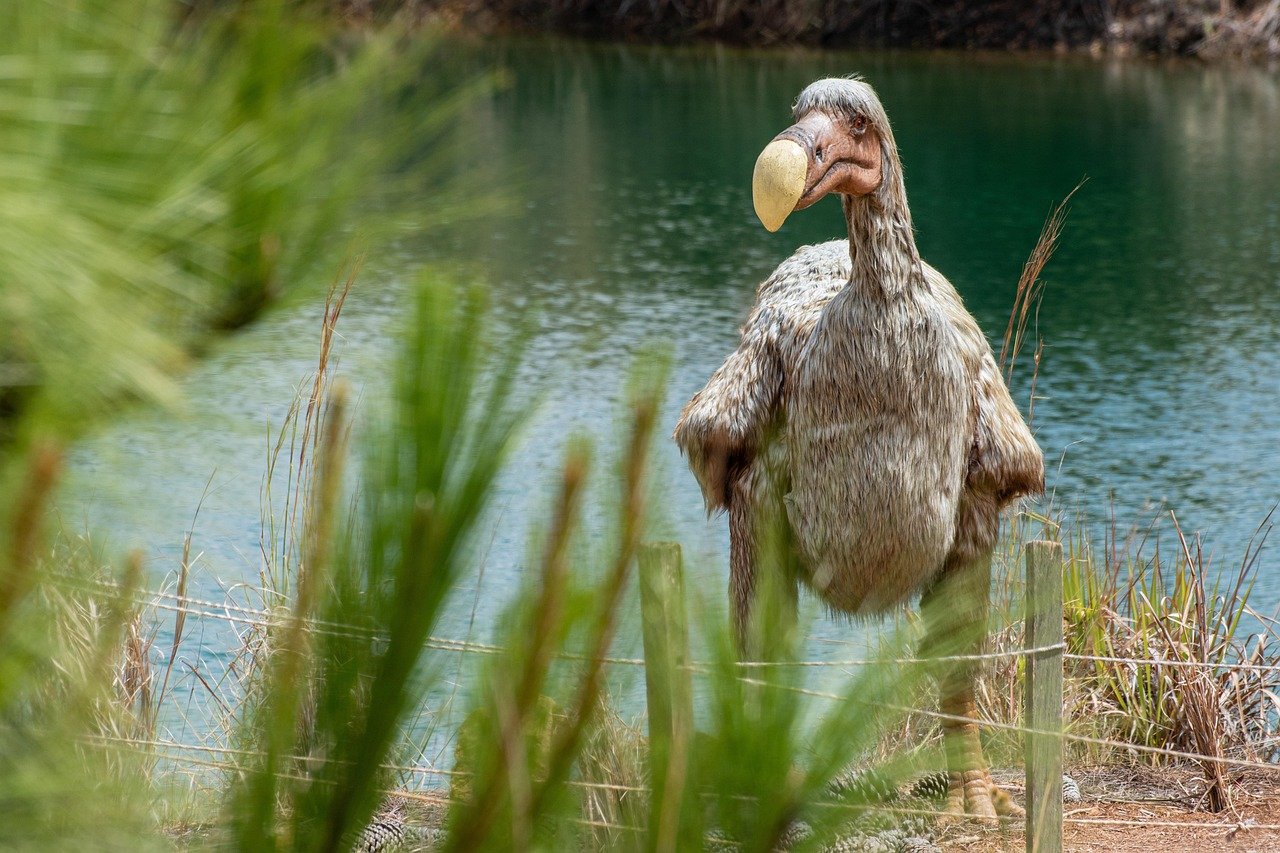In the realm of extinct creatures, the dodo bird holds a special place, not just because it is extinct, but due to the profound lessons it imparts about human impact on nature. A flightless bird native to the island of Mauritius, the dodo was last seen in the late 17th century. Its disappearance serves as a haunting reminder of the delicate balance within ecosystems and the consequences of human interference. This story, though tragic, offers a window into understanding ecological changes that ripple through time and space.
The Dodo: An Evolutionary Oddity

The dodo, with its oversized beak, stout body, and tiny wings, was a bird that defied conventional avian aesthetics. Evolution on the isolated island of Mauritius had allowed it to grow large and flightless, a testament to a lack of natural predators. This peculiar design was not a weakness but an adaptation to its environment. In a world where food was plentiful and threats were minimal, the dodo thrived. It was a perfect illustration of how evolution can tailor creatures to their specific niches, a concept known as adaptive radiation.
The Arrival of Humans: A Turning Point

The dodo’s downfall began with the arrival of humans in the 16th century. Portuguese sailors first discovered Mauritius, and soon after, the Dutch colonized the island. With them came not just humans but also rats, pigs, and monkeys—species that would become the dodo’s unintentional predators. These new arrivals competed for the same resources and preyed on the dodo’s eggs, leading to a swift decline in the bird’s population. The dodo, unaccustomed to such threats, became an easy target, illustrating the devastating impact invasive species can have when introduced to isolated ecosystems.
Ecological Consequences of Extinction
The extinction of the dodo had far-reaching effects beyond the loss of a single species. As the dodo disappeared, the ecosystem of Mauritius was irrevocably altered. The dodo played a role in seed dispersal for various plants, notably the tambalacoque tree. With the bird’s extinction, the germination of these seeds was significantly hampered, leading to a decline in the tree population. This phenomenon highlights the intricate web of life, where the disappearance of one species can lead to the decline of others, demonstrating the interconnectedness of ecosystems.
Scientific Insights: Learning from the Past

The extinction of the dodo has provided scientists with invaluable insights into the dynamics of extinction and ecological change. By studying the dodo’s life, scientists have gained a better understanding of how isolated ecosystems function and the vulnerabilities they face. These lessons are crucial in today’s world, as many species face similar threats from human activity and climate change. The dodo’s story serves as a case study, urging us to consider the long-term impacts of our actions on biodiversity.
Preservation Efforts: A Modern Perspective

While the dodo is lost to history, its story has fueled modern conservation efforts. It has become a symbol of the need to protect endangered species and preserve biodiversity. Conservationists today strive to learn from past mistakes, emphasizing the importance of protecting natural habitats and preventing the introduction of invasive species. By doing so, they aim to prevent other species from sharing the dodo’s fate, underlining the necessity of proactive conservation strategies.
The Role of Education and Awareness
Education and awareness play a critical role in preventing extinctions. The story of the dodo is often used in educational settings to illustrate the consequences of human actions on the environment. By raising awareness about the importance of biodiversity and the threats it faces, educators hope to inspire future generations to take action. The dodo’s tale is not just a story of loss but a call to arms for environmental stewardship and responsibility.
Cultural Impact and Legacy

Beyond science, the dodo has left a lasting cultural legacy. It has been immortalized in literature, art, and pop culture, serving as a metaphor for obsolescence and extinction. The dodo appears in works like Lewis Carroll’s “Alice’s Adventures in Wonderland,” where it symbolizes the absurdity of extinction. Its presence in popular culture keeps its story alive, reminding us of the importance of preserving the natural world.
Lessons in Resilience and Adaptation

The dodo’s extinction story also offers lessons in resilience and adaptation. While the bird itself could not adapt to the drastic changes brought by humans, its legacy has spurred human adaptation in the form of conservation efforts. This dual narrative of loss and resilience underscores the importance of adaptability in the face of change. It serves as a reminder that while we cannot change the past, we can learn from it to forge a better future.
A Call to Action: Protecting Our Planet

The extinction of the dodo compels us to act to protect our planet’s biodiversity. It is a stark reminder of the impact humans can have on the environment and the urgent need for conservation. By supporting conservation initiatives, reducing our ecological footprint, and advocating for sustainable practices, we can help prevent further extinctions. The dodo’s story is a clarion call for change, urging us to take responsibility for the world we inhabit.
Reflecting on the Dodo’s Legacy

In reflecting on the dodo’s legacy, we find a narrative rich with lessons about extinction, ecological change, and human responsibility. Its story is a reminder of the fragility of life and the importance of preserving biodiversity. While the dodo may be gone, its impact endures, challenging us to contemplate our role in the natural world. Through understanding and action, we can honor its legacy and ensure a thriving future for all species on Earth.




